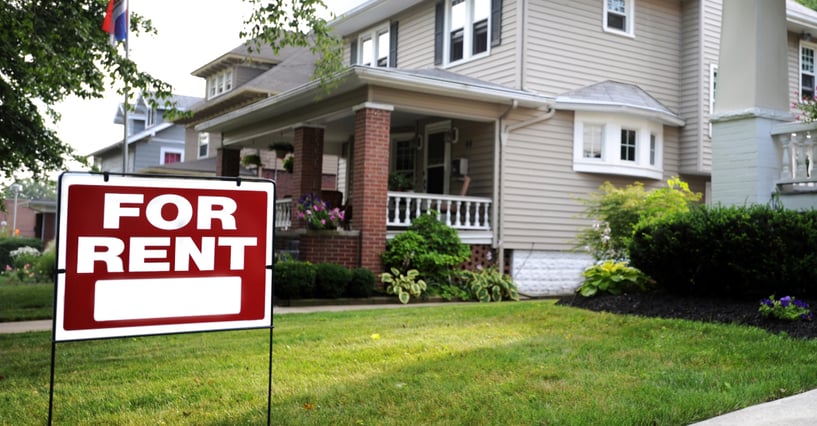
5 WAYS RENTAL PROPERTIES MAKE YOU MONEY (AND WHY YOUR REAL ESTATE PORTFOLIO NEEDS DIVERSITY)
There are many reasons today’s most prolific real estate investors are gobbling up single family rentals: Home values are rising. The dollar is shrinking. The construction of single-family properties hasn’t caught up with demand. More American families can only afford—or find—rental properties. But rentals aren’t just a trendy way to invest into today’s market—they’re a long term money maker. And the return on investment for rentals is likely higher than you’d expect, thanks to the multiple ways this investment pays you back.
Here are the five ways you can expect a return on your investment with rental properties:
1. Mailbox Money
It’s always a good day to get a check in the mail (or transfer to your account) from your rental properties. Your net cash flow is the money you get from your tenants, minus expenses and your loan payment.
Example: You purchase a $120,000 rental home. Tenants pay you $1,200 monthly. If your expenses and loan are $1,100, your net cash flow on a monthly basis is $100. Granted, $1,200 a year isn’t a large chunk of change. It’s more like the cherry on top of the other ways rental properties make you money. Compare it to the dividend of a stock; it’s likely not your primary reason for the investment, but it sure doesn’t hurt.
2. Appreciation
According to the US Bureau of Labor Statistics, home values were 877.12% higher in 2022 than in 1967. Mind you, that’s a long time to hold onto a property. But even in the last ten years, five years, one year—the average value of a home has risen significantly. In 2016, the average price for a home was $226,095 ($251,758 when adjusted for inflation). Today, the average is $329,522.
What is the lesson learned here? If you are buying SFR properties right and investing for the long term, your appreciation may vary by market, but the likelihood that you will get hurt or burned is low. The great state of Texas has had significant population growth in the last decade boasting a 125.74% appreciation rate in the last ten years and a rise in value in the last year of almost 20%.
Why Your Portfolio Needs Both High-Cash Flow and High-Appreciation Properties
Everyone knows that diversification is the key to building a balanced portfolio of stocks and bonds. Your real estate portfolio is no different. There are certain markets where your rental revenue compared to your investment will produce greater cash-on-cash yields, but the appreciation potential will be less. And there are other markets where your rental revenue compared to your investment will produce lesser cash-on-cash yields, but the appreciation potential will be greater.
You need both in your SFR portfolio.
1. Higher cash flow, lower appreciating propertiesFinding good buys in these kinds of markets is critical to a balanced SFR portfolio. It helps balance the overall near-term cash flow yield of your overall portfolio.
2. Lower cash flow, higher appreciating properties
Acquiring these kinds of properties will add long-term profit potential to your SFR portfolio. The cash-on-cash yield may be lower over the hold period, but the liquidity event will not disappoint.
As a dedicated SFR wealth manager, we encourage investors to accumulate both high cash flow and high-appreciation assets.
3. Amortization
Rental properties make use of the best source of funding: OPM (Other People’s Money). When you rent out a property and use their rent check to pay off your loan, you’re putting their money towards your principal and interest. With every rent check, you own a bigger chunk of the property you purchased with the loan.
The longer you own the property, the more of your loan payment goes to your principal, meaning you’re building equity—without using your own money!
4. Beating Inflation
The average inflation rate of the US dollar was 2.34% per year between 2011 and 2023. That’s a total price increase of 31.95%. Only 75 cents in 2011 could buy what would cost a dollar now. While disheartening, the good news is that real estate is a good bet against inflation—because real estate prices have outpaced inflation in growth.
The appreciation of the property is subject to different factors, namely your local market and the economy. But overall, you can conservatively expect it to appreciate at least 3.5% per year.
5. Tax Benefits
If you haven’t studied the IRS tax code, there’s good reason to do so: the IRS offers dozens of tax benefits to real estate investors. Those rehab repairs? Write it off. Insurance and property tax? Write it off. Loan interest? Write it off. Virtually every expense you incur related to the rental property is a business expense and should be taken into consideration at tax time.
Another benefit to holding SFR properties is that you can write-off the property depreciation of your rentals. The IRS assumes that residential properties wear out in 27.5 years. They allow you to deduct 3.636% of the property’s cost basis from your annual income to reduce the amount of your taxable income. Note the value of the land, which does not “wear out” is not included in this figure.

![]()
See How It All adds up Yourself
Learn how to calculate your return on investment for a particular property in detail with our free, downloadable guide.




